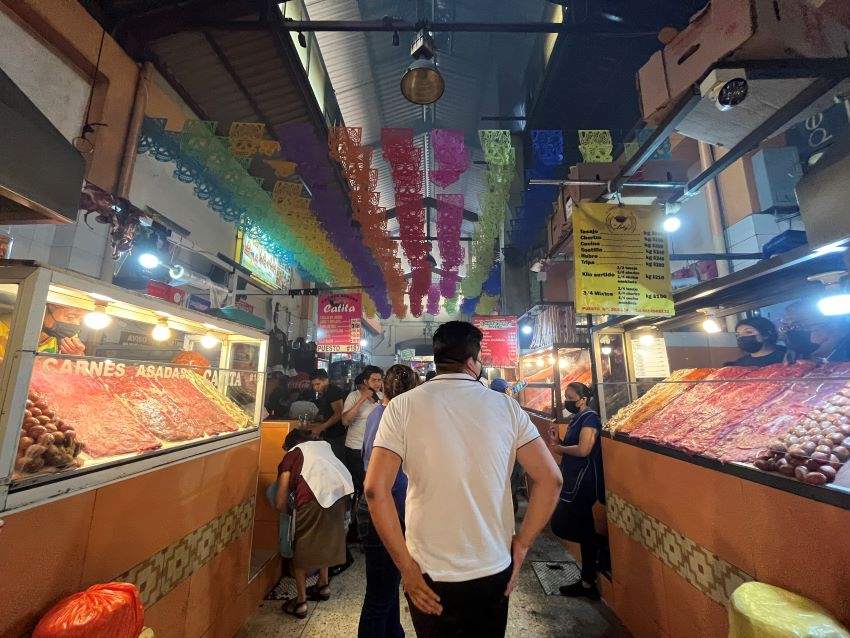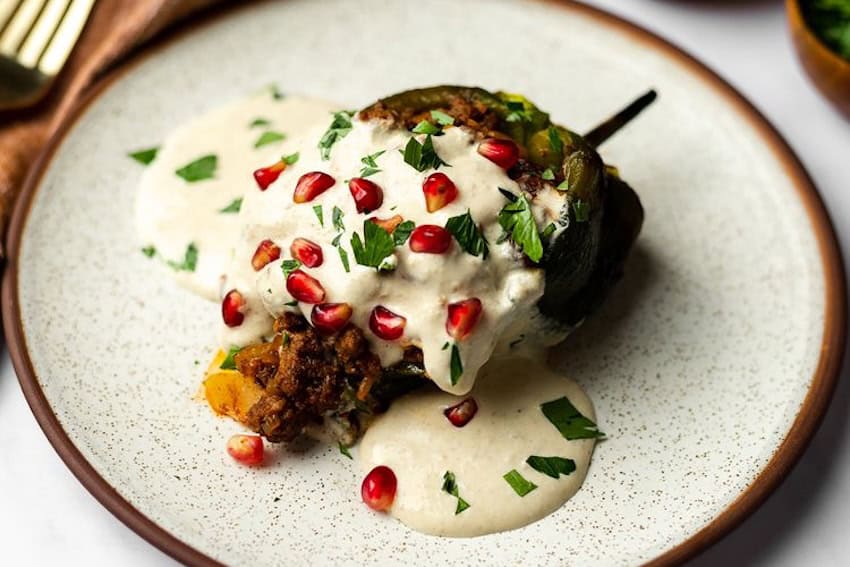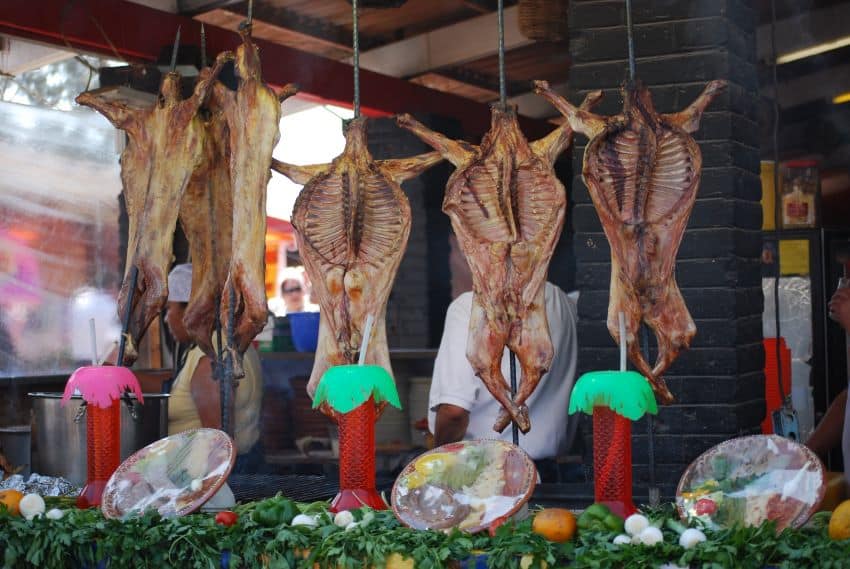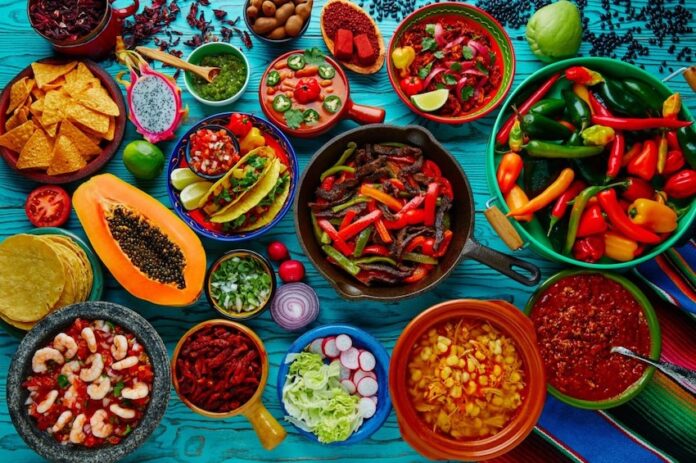When I first visited Mexico more than 15 years ago, I was floored by the impressive ancient ruins and outstanding landscapes, but it was the foodies paradise that kept pulling me back. The smell of carne asada wafting through the air, the sound of meat sizzling on the comal and the vibrant colors of fresh chilis, tomatoes and corn in the market constantly called to me.
Four years ago, I made the move to Mexico with my family, and since then, we’ve been on a journey to learn more about Mexican cuisine and taste every single dish here. Through countless street-side taco stand visits, market wanders and restaurant tastings, we’re slowly unraveling the layers behind Mexican culinary culture and getting to know the country one taco at a time.
This is the second installment of Where to Travel in Mexico 2025, a series that explores the best locations across Mexico for various types of travelers, whether you’re a digital nomad, road tripper or luxury traveler. As a travel writer obsessed with Mexican food, this installment has been particularly fun to write. For fellow foodies out there, I’ve cherry-picked six locations that offer the best food experiences in the country.
Mexico City: Epicureans

National Geographic Traveller recently named Mexico City one of its top food destinations for 2025, for good reason. The capital city has long been a destination for food lovers, with an incredible range of food options that range from chowing down tacos on the sidewalk to sampling craft beers and antojitos in hip food halls to dining at the fanciest Michelin-starred restaurant.
Mexico City is home to some of the world’s most acclaimed contemporary restaurants that creatively reinvent traditional Mexican flavors. At the forefront are three standout establishments — Pujol, Quintonil and Rosetta — each celebrated internationally and featured on The World’s 50 Best Restaurants list. Quintonil, ranked seventh on the 2024 list, has a long waiting list, so book way in advance to try its 10-step seasonal tasting menu prepared with sustainable, locally sourced ingredients.
The street food culture in Mexico City is more alive here than anywhere else — I’ve spent countless evenings scouring its streets for the best slow-cooked pork carnitas and tacos de guisado, and always end up eating way more than I want to. Mexico City is also said to be the only place that makes tacos al pastor the right way. Chilangos often debate about where to find the best al pastor, but I’m a loyal fan of Tacos Los Güeros. El Califa de León, the only taquería in Mexico City with a Michelin star, serves up the city’s best tacos de bistec with huge, juicy beef filets.
Oaxaca: Heritage hunters

To truly understand Mexico’s culinary heritage, you have to take a journey to Oaxaca, the cradle of the country’s Indigenous Zapotec foodways. Because of the region’s climate and rugged landscapes, crisscrossed with semi-desert plains and precipitous mountains, the quality of the native ingredients grown here is unlike any other. Mexican staples like corn, tomatoes, hoja santa, chilis and chocolate cultivated here burst with the richest flavors.
Oaxaca boasts many regional specialties like mole — a rich sauce containing nuts, fruit and chocolate — and tlayuda, a large toasted tortilla topped with beans, steak and cheese. The best places to sample these traditional fare are in its markets: the Mercado 20 de Noviembre has a corridor, the Pasillo de Humo, lined with roasting meats and smoky grills, while the chaotic Central de Abastos is a great spot to try roasted chapulines and memelas, corn patties smeared with pork lard.
Susan Metenosky, an American living in Oaxaca who blogs at Brooklyn Tropicali, tells us, “I’m lucky enough to have the pleasure of eating through Oaxaca with my Oaxaqueño husband. I thought I knew about mole and tlayudas before, but then Arturo took me to Tlayudas la Chinita on our first date, and we haven’t stopped visiting his — and my — favorite taquerias since.”
Mérida, Yucatán: Adventurous eaters

Yucatán has a culinary heritage that predates the Spanish conquest, with many dishes tracing their roots to the ancient Maya civilization. Its capital city, Mérida, is a rising star in Mexico’s epicurean scene. In 2019, Unesco named it a creative city in gastronomy for its efforts in sharing Yucatecan food with the world.
While Mérida has an abundance of Yucatecan restaurants, the most heartfelt and time-honored flavors are found in the bustling markets and on street corners. It was in the Mercado Santiago where I first felt Mérida’s real draw, as I wandered the rows upon rows of food stalls. At Taquería La Lupita, I watched as ladies dressed in traditional huipils hand-knead masa, transforming it into comfort foods like panuchos and salbutes.
Just outside of Mérida, in the tiny Maya village of Yaxunah, I had the privilege of meeting chef Rosalía Chay Chuc, whose ancestral cochinita pibil has drawn attention from food lovers and world-renowned chefs alike. Wrapped in banana leaves, the pork is slow roasted in an underground oven, seasoned with a blend of achiote spice and bitter orange that gives it a tangy citrus flavor. Chef Chay’s mastery of this traditional Maya dish eventually inspired the famed Noma Tulum pop-up.
Puebla: Culture connoisseurs

Puebla has one of Mexico’s most dynamic cuisines, with an interesting blend of Indigenous, Spanish and Arab influences. As Mexican content creator Champi Alvarez shares, “I’ve visited Puebla a few times since I was a kid and have always been fascinated by its gastronomy. The state has very complex recipes and diverse dishes and flavors.”
Indeed, Puebla is the birthplace of numerous classic Mexican dishes, including chile en nogada, a roast pepper stuffed with minced meat and covered with a walnut sauce. Said to date back to 1821, this iconic meal features the colors of the Mexican flag: green from the pepper, white from the creamy sauce and red from the pomegranate. The best place to try it is the award-winning Augurio, headed by the legendary chef Vazquez.
The city also created mole poblano, the sweetest, spiciest and — dare I say — best of the moles. Unlike the other variations, mole poblano features a large proportion of chilis, and it gets its sweetness from chocolate and fruit. I had the best mole poblano right here in Puebla, served in the back of a pottery shop on Callejón de los Sapos, using recipes passed down from generations.
Veracruz: Seafood lovers

Ask any Mexican where to find the best seafood in the country and they’ll probably say Veracruz. The coastal state runs alongside the Gulf of Mexico, its water brimming with all kinds of seafood — oysters, shrimp and crabs — as well as various species of fish, like red snapper, grouper and the locally-treasured mojarra. Beyond the coast, over 40 rivers and numerous lakes crisscross the state, providing a steady supply of freshwater fish.
Seafood feeds my soul, so I knew Veracruz would be easy to love. It won my heart with my first meal here: huachinango a la Veracruzana, a red snapper dish drenched in a feisty red sauce made with tomatoes and jalapeños, onions, capers and olives. Veracruzana sauce has become a classic throughout Mexico and makes a piquant complement to all kinds of seafood.
Another signature dish on most restaurants’ menus here is the arroz a la tumbada, a soupy rice dish simmered with shellfish, octopus and fish and seasoned with chili and epazote. The beachfront Villa Rica Mocambo dishes out a rich and savory arroz a la tumbada, as well as seafood tostadas, while the city’s most elegant restaurant, Mardel, serves fresh seafood with a contemporary touch.
Monterrey, Nuevo León: Carnivores

A Mexican friend once said that no conversation about Mexican food is complete without a journey north. This is the heartland of Mexico’s cattle ranches, a region where beef reigns supreme and the quality is considered the best in the country.
Because of Monterrey’s dry climate and semi-arid ecosystem, the city’s charcoal-grilled carne asada is said to be infused with a unique smoky flavor. On my first trip there, a local friend brought me to La Nacional, a Monterrey institution that serves up regional cuisine. My decadent rib-eye, topped with crushed chili and bone marrow, was transformational, while the truffled fries and mezcal cocktails made the meal all the more memorable.
Besides beef, Regiomontanos, as locals are called, are equally proud of their cabrito, young goat usually roasted on a metal spit over charcoal. El Rey del Cabrito has made a name for itself using traditional recipes and melt-in-your-mouth goat meat. The restaurant is a destination on its own, its walls adorned with photos of celebrities and shimmering golden kitschy decor. You’d best come hungry, as portions are huge here!
Summary
We’ve put together a table summarizing which destination would suit travelers based on their experience in Mexico.
Beginner travelers are those with limited international experience; maybe this is their first trip to Mexico. Ideal for first-timers who prefer margaritas with training wheels. These travelers stick to well-trodden paths, mastering “¿Dónde está el baño?” while clutching a phrasebook. They thrive in destinations where guacamole arrives with optional spice and the hotel staff speak Google Translate.
Intermediate travelers are those with some international experience who can handle moderate language barriers and cultural differences. Ready to trade resorts for real-deal experiences, these travelers navigate cobblestone streets without face-planting. They’ve graduated to ordering “tres tacos al pastor” without pointing and can haggle for a sombrero in Oaxaca’s markets… but still overpay by 20%.
Advanced travelers are those with extensive experience navigating complex destinations independently. These wanderers treat Mexico like a choose-your-own-adventure novel written in Spanglish. They’ve adopted a street dog named Churro, debate the merits of different artisanal mezcals and know which mercado stall has the best tamales oaxaqueños.
![]()
Nellie Huang is a professional travel writer and author based in San Miguel de Allende with her family. She has contributed to BBC Travel, CNN, International Business Times and National Geographic and co-authored Lonely Planet’s 2025 Mexico guide. Read about her adventures worldwide on wildjunket.com and follow her updates on Instagram @wildjunket.
